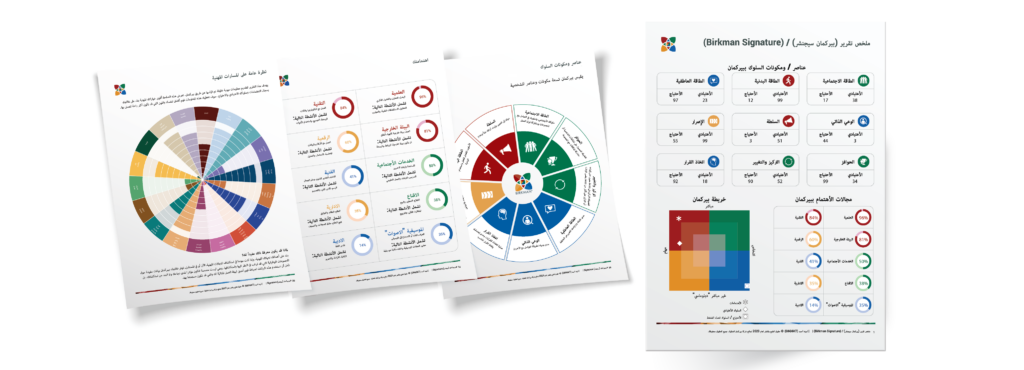
The Birkman Method
The Birkman Method is a scientifically validated behavioral career assessment, developed in 1951 by Dr. Roger Birkman. This assessment represents an advancement in personality evaluation through a positive psychology approach, distinguishing itself from traditional medical models.
The Birkman Method helps uncover the hidden traits of leaders, employees, and teams, contributing to a better understanding of their strengths and potential challenges. It aids in understanding behaviors and their impact on others, improving leaders’ ability to motivate others and align their behaviors to meet team needs. It also fosters the development of emotional and social intelligence skills for leaders.
Why Birkman?

Actionable Data
The Birkman Method provides abundant data that helps understand a person's motivations and leverage their strengths to enhance performance at work.

Deeper Insight
Birkman uncovers the underlying motivations of individuals and how they make decisions, helping them achieve personal and professional growth.

Scientifically Proven
For over 68 years, Birkman has proven its effectiveness in the business world, globally enhancing performance in large organizations across various sectors.

Emotional Intelligence Tools
Birkman enhances social awareness and improves communication effectiveness by offering a deeper understanding of behavior. It reveals the hidden motivations of individuals and how they make decisions.
Years of Credibility and Reliability
Languages
Certified Consultants
Countries with Certification
Birkman Reaches the Depth of Personality
01
The Only Assessment That Measures Needs
Understanding one's needs enables them to identify what motivates them and avoid behaviors under pressure.
02
Studying Personality and Perceptions in a Social Context
By recognizing others' perspectives of the world, individuals can empathize and better understand their colleagues, facilitating communication.
03
Integrating Professional and Behavioral Data in One Assessment
Measures how employees communicate with others, providing insight into potential gaps in an organization's communication system or culture.
What Does Birkman Measure?
Typical Behavior
What a person perceives as an effective way to perform to achieve results. It refers to what they see as their strengths and represents how they act when they feel comfortable in their environment.
Needs
Identifies a person’s expectations from others and their surrounding environment. Birkman is the only assessment that measures needs.

Interests
Summarizes what a person wants to do, the preferred activities that motivate them, and also indicates the type of outcomes they seek and the nature of activities that bring them the most satisfaction. It is what the person enjoys doing.
Behavior Under Stress
Refers to how a person may react when outside their comfort zone or when treated in a way that differs from their expectations. It is an unconscious response to uncomfortable situations.
Birkman Reports
Birkman provides reports that include both behavioral and professional data, with more than 60 reports available for each individual. Birkman reports can be classified into two main groups:

Professional Reports
These are used to assist in selecting a specialization, discovering career paths, recruitment and selection, career guidance, leadership development, and team building.

Relationship Reports
These explain how an individual communicates and interacts with others, as well as their work requirements.
Birkman for a Successful Employee Life Cycle
Birkman reports can be used at every stage of an employee’s career cycle. Companies across various sectors, including non-profit organizations, effectively use the Birkman assessment to develop their talents and teams. Birkman helps individuals express their strengths and leverage the differences that make us unique. It contributes to raising self-awareness and awareness of others, positively influencing all of an individual’s relationships on a personal level.
There are key applications for which people use Birkman, such as leadership transitions, high potential development, leadership training, and executive coaching:

Leadership Development and Executive Coaching
Developing outstanding leaders by increasing their selfawareness.

Succession Planning and Career Progression
Preparing emerging talent to lead the organization into the future.

Team Effectiveness
Building successful teams by creating a common language of communication.

Talent Development
Enhancing employee performance through increased selfawareness and emotional intelligence.

